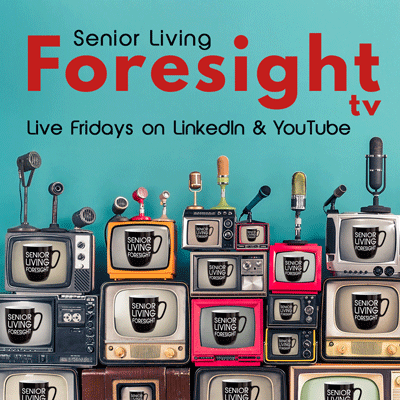By Leigh Ann Hubbard
Asking for referrals can feel as awkward as asking for a favor. “Mrs. McCoy, see that empty room? We could really use a move-in.”
Of course, you wouldn’t put it that way, but doesn’t it sometimes feel that forced?
It doesn’t have to though! In fact, asking for a referral can feel—and be—more like offering help. And helping people is one thing people in senior living are great at.
At a recent LeadingAge Washington meeting, Wendy O’Donovan Phillips explained a better way to ask for referrals — and included exact sentences you can work smoothly into a conversation. Phillips is CEO of the marketing agency Big Buzz (a Foresight partner). She trains senior living professionals to use empathy-based, people-first methods to get more move-ins.
Wendy’s full lecture is available here. It includes a wealth of sales and marketing advice that goes against the grain — focusing more on relating to humans than beating algorithms. The last third of the lecture homes in on referrals.
How to Ask for Referrals
So how do you build referrals? You ask for them! Obvious but often not easy. Here are some of Wendy’s tips to motivate you — and your entire team — to make that all-important ask.
First, change how you think about referrals. Then, decide who needs you most.
Step one: Decide what your community does best that can’t be found anywhere else. The best way to do this is to survey residents and family members, asking just that and looking for commonalities in their responses. This voice-of-the-customer data will definitively answer: What is that special something you provide seniors and their families?
Step two: Think of that unique positioning as a promise. “Doesn’t everybody deserve that promise to come true?” Wendy asks in the lecture. Asking for a referral means extending that promise to the person’s friends and family. It’s offering help, not asking for a favor.
Step three: Consider who you want to ask. Who is the ideal resident or family member? Maybe it’s simply someone who needs memory care or assisted living because that’s where your vacancies are. Or maybe it’s something deeper — something that makes the person an especially well-qualified lead. Either way, keep an eye out for people who fit your ideal profile.
What to Say
Here are some examples of how to request a referral naturally:
- If you have anyone who would benefit from our services, please send them our way.
- We love families like yours, and we’d love to serve your friends.
- We’re accepting new residents. (It’s simple, but Wendy points out that people don’t know this unless you tell them!)
One opportune time to ask for a referral is when someone thanks you. For example, if a resident’s family member says, “You’ve made a big difference for me today,” you could respond, “Thank you. The greatest compliment you can give us is the gift of referral.”
Wendy suggests even adding that last sentence to your email signature.
How to Motivate Your Team to Ask
In the video, Wendy goes into more detail, but here are the basic steps to turn your team into a referral team:
- Put someone in charge of the referral system.
- Set a quantifiable, tangible goal (for example, five more referrals per month than your last six-month average).
- Determine how the person in charge will measure and report success to the team.
- Determine how — and how often — the team, as well as individual team members, will be celebrated for their wins.
Referrals make for warm, qualified sales leads, Wendy says. It’s worth putting some effort into motivating your team to ask for them.
Wendy’s 45-minute lecture, “Why Wait on the World? Boost Census Now,” is chock-full of insightful, actionable marketing and sales advice. Watch it at Big Buzz’s website by clicking here.








